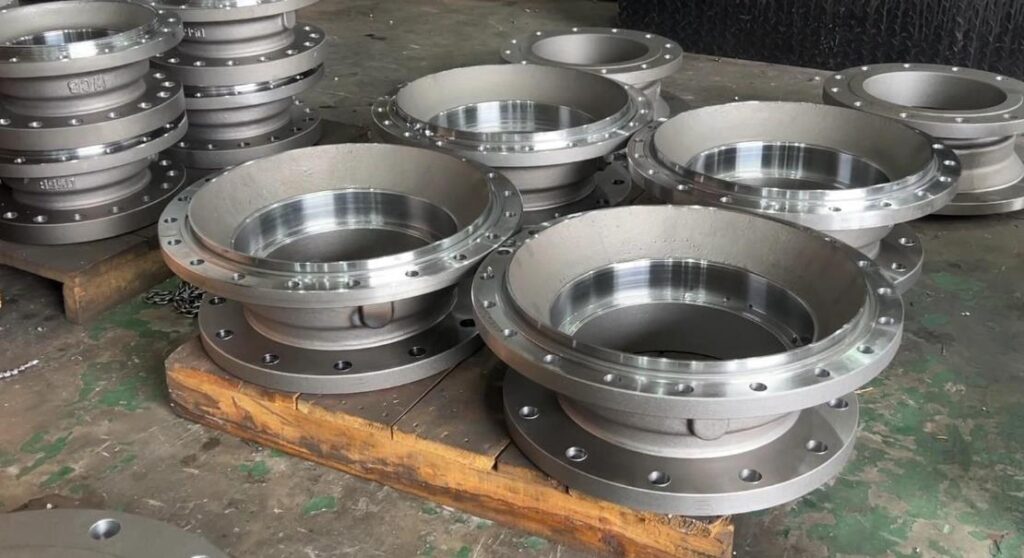Lapping process in valve manufacturing: In the valve manufacturing industry, lapping is a widely used finishing process specifically designed to enhance the performance of valve sealing surfaces. Grinding process can give the valve sealing surface very high dimensional accuracy, geometric accuracy and surface roughness, but it does not change the sealing surface between the surface of the mutual positional accuracy. After grinding the valve sealing surface, its dimensional accuracy can usually reach 0.001 to 0.003 millimeters; geometric accuracy (such as flatness) of 0.001 millimeters; and surface roughness can be controlled in the range of 0.1 to 0.008 microns.
Fundamentals of the grinding process
The grinding process consists of five core elements: the grinding process, the grinding motion, the grinding speed, the grinding pressure and the grinding allowance.
- The grinding process
During the grinding process, the grinding tool is closely bonded to the seal surface and carries out a complex grinding motion along the fitting surface. An abrasive is placed between the tool and the seal, and as they move relative to each other, the abrasive particles in the abrasive slide or roll between the surfaces, thereby removing a very thin layer of metal from the seal surface. During this process, the raised portions of the seal surface are first smoothed until the desired geometry is achieved. It is important to note that grinding is not only a mechanical processing of the metal by the abrasive, but is also accompanied by a chemical action. The grease in the abrasive accelerates the grinding process and helps to form an oxide film. - Lapping motion
In the grinding motion, each point on the seal surface should have the same sliding path relative to the grinding tool, and the direction of movement needs to be constantly changed. This variation ensures that each abrasive particle does not repeat the same trajectory on the seal surface, thus avoiding visible abrasion marks and maintaining a low roughness of the seal surface. At the same time, the change in the direction of motion also helps to distribute the abrasive evenly and remove metal from the seal surface more uniformly.
Whether manual or mechanical grinding, the geometric accuracy of the seal surface is mainly influenced by the geometric accuracy of the grinding tool and the grinding motion. - Grinding speed
The faster the grinding speed, the higher the efficiency. This is because more abrasive particles pass over the surface of the workpiece per unit of time, thus removing more metal. Typically, grinding speeds range from 10 to 240 meters per minute. For workpieces requiring high precision, the grinding speed is usually no more than 30 m/min. The grinding speed of valve sealing surfaces depends on the material of the sealing surface, for example, 10 to 45 m/min for copper and cast iron sealing surfaces, 25 to 80 m/min for hardened steel and carbide sealing surfaces, and 10 to 25 m/min for austenitic stainless steel sealing surfaces. - Grinding pressure
Grinding efficiency increases with the increase in grinding pressure, but the grinding pressure should not be too large, generally controlled between 0.01 and 0.4 MPa. For the sealing surface of different materials, the grinding pressure is also different. For example, when grinding cast iron, copper and austenitic stainless steel, the pressure is 0.1 to 0.3 MPa; while the grinding pressure of hardened steel and cemented carbide sealing surface is 0.15 to 0.4 MPa. Select the larger value for rough grinding and the smaller value for fine grinding. - Grinding allowance
Since grinding is a finishing process, the cutting volume is small. The amount of grinding allowance depends on the machining accuracy and surface roughness of the previous process. The smaller the grinding allowance, the better, provided that the traces of the previous process are removed and the geometrical errors are corrected.
Before grinding, the sealing surface should normally be fine ground. Finely ground sealing surfaces can be directly ground with a minimum grinding allowance that varies according to the diameter and flatness of the dimensions. Hand grinding or material hardness is high, the margin to take the smaller value; mechanical grinding or material hardness is low, the margin to take the larger value.
For the valve body sealing surface which is inconvenient for grinding, fine turning can be used. The sealing surface after fine turning needs to be roughly researched before fine grinding, and its plane allowance is usually between 0.012 and 0.050 millimeters.
Through an in-depth understanding of the basic principles and operating points of the grinding process, valve manufacturers can ensure that the production of valves with excellent sealing performance to meet the needs of a variety of industrial applications.
